Opinion & Analysis
Who knows how to fit better than the source?
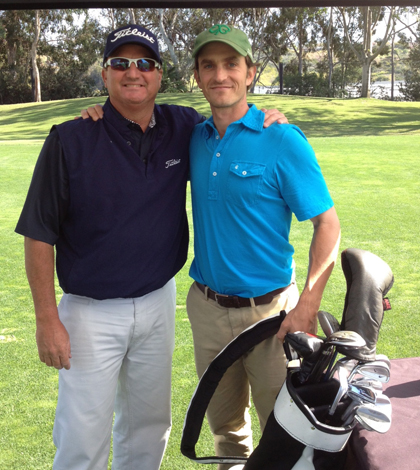
Last week I traveled to seemingly always weather-perfect Carlsbad, Calif., where I did a full club fitting at Titleist’s Oceanside facility.
It was the second time in as many months that I have visited the guys with the cursive logo, the last time being specifically for a Vokey wedge fitting. It also happened to be the second time that I have done a full club fitting.
The first time was with Nike in Spring 2012, or just a few months after swinging the driver and 3-wood for my first time ever. During that fitting, my goal was more about making contact with the ball instead of fine tuning gear for a grooved swing; and they didn’t have a lefty 3-wood at the fitting, so that stick was assumed into my bag without a full test run.
In the 12 months since then I have put in about 1,000 hours of practice and countless rounds. My consistency has improved from something resembling a blindfolded chimp to a precociously self-assured golfer looking to improve upon his 6 handicap, and it was time to get fit for some gear that can help me reach the next level.
Back in February when my Vokey TVD wedges arrived, I had never swung any sticks that were not branded with a swoosh, and was so happy with the Vokey’s performance that I decided to return to Carlsbad to switch out the remaining clubs. When I first went down there, I didn’t realize that it was possible to get fit by the same guys who fit their PGA Tour pros and was blown away by the experience, so decided that going to the source was the best way to make certain that I was getting the best fit for my game.
It was a beautiful April day in Oceanside and my club fitter was Sr. Fitting Analyst Rob Bunn. We had worked together on the wedges so he knew some of my tendencies, which was great as we could get right to work. At the beginning of the experience you change into golf shoes, grab a water (or coffee for guys like me, being a Portland boy) and head out to the pristine range where a section of perfect grass is reserved for you.
They ask you to space your divots out instead of putting them all right next to each other, as they say the grass heals better when it’s individual divots rather than a large section missing. This seems to be contrary to how most grass ranges want you to hit, but I’ll assume they know what they are talking about as they have done this for years and the sod all seems perfect:
To start, I got a hard time from the boys as I hadn’t had time to clean my grooves before flying out from Oregon. They joked with me about it — they knew I understood how important it is for spin to keep my grooves clean. But I had gone straight from course to airport and didn’t have a chance. Walking up to the facility, my last thought had been, “Please don’t look at how dirty those wedges are.”
I warmed up by hitting my gamer clubs, which were Nike Pro Combos with Project X PXI shafts (5 though 9 iron), 21- and 24-degree hybrids with Tour AD stiff shafts and a Mach Speed SQ 10.5 degree Driver with a Project X 6.0 stiff shaft. I’ve had a few Nike drivers, but for some reason that one seems to be the lesser of the evils when mixed with my swing.
I only had 13 clubs (also in the bag is a SeeMore putter, 46 degree Vokey that I use as my pitching wedge and a 50, 54 and 58 degree wedge) because I had taken the Nike 3 wood out a few months ago due to the fact that I hit the 3-hybrid just as far and more consistent. For some reason, I could never get the 3 wood to travel more than about 210 total yards, and it always felt to me like hitting golf balls with an oversized chop-stick. I’ve been testing out a number of different 3 woods, but figured I would wait until this trip to purchase one as I wanted to make sure it fit me. It didn’t make sense to buy a 3 wood a month or two before getting fit for clubs.
My fitting began with the 8 iron. Rob would hand me clubs, and I would hit some balls while he watched the flight and the Doppler radar launch monitor gathered the swing and ball data. Every time he handed me a new stick, I would swing it a few times and all sorts of different results would ring in. It was pretty astonishing. The same swing (or at least extremely similar swings) would produce five push fades or five hooks — or five fat and thin shots or five nice baby draws. It’s amazing how much the lie angle and shaft can make a difference.
We quickly decided that the AP2 712 was the right iron head, and almost as quickly that the KBS Tour stiff shafts stood out as a winner. That combo, along with a standard length and standard lie produced a nice shot nearly every time. When trying the 5 iron, the same results occurred and I was sold on the setup as was Rob. Due to the ball speed and trajectory, he decided that 1 degree strong would be the way to go with all of my irons, too.
Because of the amount of spin my swing put on the ball, he decided that I should go with 4 through 9 irons and one hybrid instead of going my old set up. My 21- and 24-degree hybrids produced very similar shots, so it made sense to me to have one rescue and a 4-iron, as in theory the 4 iron would be easier to control. So the next step was finding the right hybrid.
I was having issues with all of my swings, in part because my gamer irons had been, for some reason, 3 to 4 degrees flatter than I needed. It’s an entirely different topic, but along with an overly flat swing I had ingrained a wrist flip through the impact zone. Now that I was trying out standard lie clubs and have been working on a steeper swing, my miss was to keep that wrist flip in the swing and hook some shots. Rob saw this and after struggling with the hybrids, he decided to switch it up and fit me for a driver. So, we took a detour and started hitting some 913 drivers.
The driver was my No. 1 priority, and main reason for wanting to go to Titleist to get professionally fit. I was happy to see that TPI Oceanside had plenty of Lefty options.
I’ve been struggling with that stick since first hitting one in mid-November 2011, and wanted to take the uncertainty of ill-fitting gear out of the equation. It’s far too easy to blame your sticks if you are uncertain of their characteristics, and blaming gear will never help you improve.
Instead, I NEEDED to find a driver that I KNEW fit me, so I could move on and focus solely on technique and trust it to move forward. My driving has been like Bill Paxton’s acting: almost always sub-par, but on random occasions showing up and surprising everyone. Not good enough and I have been focusing on tee shots in practice.
He first gave me a regular flex shaft, and I sliced a ball over the left fence that seemed way to high to hit over. Then pull-hooked one off the planet. It was pretty obvious I needed a bit less action between my hands and the club head, so we went to stiffer.
I was still lacking in control and missing too far in both directions, so the next step was to invite Titleist Vice President of Tour Promotions Larry Bobka to check out my swing. Larry was able to identify a few things that I could do to improve consistency. I listened to his advice, which happened to be exactly what I was working on back in Portland, and started seeing great results once they put a 913 D3 head on a Speeder VC 7.2 Extra Stiff 44.5 inch shaft that was tipped 0.5 inches.
I knew I didn’t like regular or even stiff shafts, but this extra stiff felt awesome. Even though we went with a 44.5 inch shaft, my ball speed on the range was still between 155 and 160 mph, and Larry said with some form improvements I could see that increase by 5 to 6 mph. That would put me right around the PGA Tour average of 165 mph ball speed with the driver. I know I’ll never be the longest guy by any means, but if I can get my tee shots to PGA Tour average then I know I will be able to keep up with the crowd.
I hit a number of drives with this setup and was very happy with the results. It seemed like the perfect fit. Now the goal was to find a 3 wood and hybrid to fill the final two gaps in the bag.
The 3 wood wasn’t too tough now that we knew more about my swing via the driver fitting. Rob went with a couple of options before landing on the 913F D2 (15 degrees) with an extra stiff Diamana White Board Plus 82 shaft that was 0.5 inches under standard length. We tipped its shaft 0.5 inches as well, and it felt great.
I loved the control that I had with the extra stiff shaft, because it felt like the club head was staying with me no matter how hard or easy I wanted to swing. The numbers were good, too, as I was getting about 140 to 145 mph of ball speed. It was hard to tell what distance things were flying because it was into a stiff wind, but the shot shape was nice and the ball speed was what they were looking for so all was well.
The final step was the hybrid. Now that I was more confident and my swing was under control, it was much easier to find the right fit. Just a few options in, we went with the 913H D3 (19 degrees) with a Diamana Blue Board Plus 82 extra stiff shaft at a standard length. It was odd, but the standard length hybrid fit better, even though the driver and 3 wood were best fit at 0.5 inches shorter than standard.
I never would have guessed at most of these settings, but that is why I went to the source to figure out what I should be hitting. When I last was fit for clubs more than a year ago I had been swinging woods and drivers for barely four months and had not come close to grooving a swing. In fact, during my original fitting in early 2012 my main goal was just to hit the ball — I wasn’t thinking about shot shape and control. I can imagine that it was very hard to fit me into anything, as my swing was so new.
A lot of time and practice has happened since that fitting and it is crucial for performance to stay on top of your gear. I am very excited about getting these new sticks and cannot wait to start practicing with them. There will definitely be an adjustment period as the lies, length, weights, etc. are different, but after a week or two of grinding on the course and range the changes will hopefully start to pay off.
The next post will be about the launch monitor specifics between my current clubs and the new Titleists that will arrive soon. We shall get to the bottom of exactly how much periodically getting fit for sticks can positively change your game through some concrete data.
To wrap things up, here’s “What’s in the bag.”
Driver: Titleist 913 D3 (9.5 degrees)
Setting: D4
Shaft: Fujikura Motore Speeder VC 7.2 X (Tipped 0.5 inches, 0.5 inches under standard)
3 Wood: Titleist 913F D2 (15 degrees)
Setting: D4
Shaft: Mitsubishi Rayon Diamana White Board Plus 82X (Tipped 0.5 inches, 0.5 inches under standard)
Hybrid: Titleist 913H D3 (19 degrees)
Shaft: Mitsubishi Rayon Diamana Blue Board plus 82X
Irons: Titleist AP2 (4-9, bent 1 degree strong)
Shafts: KBS Tour (S-Flex)
Wedges: Titleist Vokey SM4 (46-08 and 50-08), Vokey TVD M Grind (54 and 58)
Shafts: Dynamic Gold S200
Putter: SeeMore mFGP
Ball: Titleist Pro V1X
Editor’s Note: The cost of an individual fitting (metal woods, irons or wedges) at TPI Oceanside is $200. A full bag fitting is $500. All equipment is sold separately through authorized Titleist accounts.
- LIKE4
- LEGIT0
- WOW0
- LOL0
- IDHT0
- FLOP0
- OB0
- SHANK0
Instruction
The Wedge Guy: The easiest-to-learn golf basic

My golf learning began with this simple fact – if you don’t have a fundamentally sound hold on the golf club, it is practically impossible for your body to execute a fundamentally sound golf swing. I’m still a big believer that the golf swing is much easier to execute if you begin with the proper hold on the club.
As you might imagine, I come into contact with hundreds of golfers of all skill levels. And it is very rare to see a good player with a bad hold on the golf club. There are some exceptions, for sure, but they are very few and very far between, and they typically have beat so many balls with their poor grip that they’ve found a way to work around it.
The reality of biophysics is that the body moves only in certain ways – and the particulars of the way you hold the golf club can totally prevent a sound swing motion that allows the club to release properly through the impact zone. The wonderful thing is that anyone can learn how to put a fundamentally sound hold on the golf club, and you can practice it anywhere your hands are not otherwise engaged, like watching TV or just sitting and relaxing.
Whether you prefer an overlap, interlock or full-finger (not baseball!) grip on the club, the same fundamentals apply. Here are the major grip faults I see most often, in the order of the frequency:
Mis-aligned hands
By this I mean that the palms of the two hands are not parallel to each other. Too many golfers have a weak left hand and strong right, or vice versa. The easiest way to learn how to hold the club with your palms aligned properly is to grip a plain wooden ruler or yardstick. It forces the hands to align properly and shows you how that feels. If you grip and re-grip a yardstick several times, then grip a club, you’ll see that the learning curve is almost immediate.
The position of the grip in the upper/left hand
I also observe many golfers who have the butt of the grip too far into the heel pad of the upper hand (the left hand for right-handed players). It’s amazing how much easier it is to release the club through the ball if even 1/4-1/2″ of the butt is beyond the left heel pad. Try this yourself to see what I mean. Swing the club freely with just your left hand and notice the difference in its release from when you hold it at the end of the grip, versus gripping down even a half inch.
To help you really understand how this works, go to the range and hit shots with your five-iron gripped down a full inch to make the club the same length as your seven-iron. You will probably see an amazing shot shape difference, and likely not see as much distance loss as you would expect.
Too much lower (right) hand on the club
It seems like almost all golfers of 8-10 handicap or higher have the club too far into the palm of the lower hand, because that feels “good” if you are trying to control the path of the clubhead to the ball. But the golf swing is not an effort to hit at the ball – it is a swing of the club. The proper hold on the club has the grip underneath the pad at the base of the fingers. This will likely feel “weak” to you — like you cannot control the club like that. EXACTLY. You should not be trying to control the club with your lower/master hand.
Gripping too tightly
Nearly all golfers hold the club too tightly, which tenses up the forearms and prevents a proper release of the club through impact. In order for the club to move back and through properly, you must feel that the club is controlled by the last three fingers of the upper hand, and the middle two fingers of the lower hand. If you engage your thumbs and forefingers in “holding” the club, the result will almost always be a grip that is too tight. Try this for yourself. Hold the club in your upper hand only, and squeeze firmly with just the last three fingers, with the forefinger and thumb off the club entirely. You have good control, but your forearms are not tense. Then begin to squeeze down with your thumb and forefinger and observe the tensing of the entire forearm. This is the way we are made, so the key to preventing tenseness in the arms is to hold the club very lightly with the “pinchers” — the thumbs and forefingers.
So, those are what I believe are the four fundamentals of a good grip. Anyone can learn them in their home or office very quickly. There is no easier way to improve your ball striking consistency and add distance than giving more attention to the way you hold the golf club.
More from the Wedge Guy
- The Wedge Guy: Golf mastery begins with your wedge game
- The Wedge Guy: Why golf is 20 times harder than brain surgery
- The Wedge Guy: Musings on the golf ball rollback
- LIKE80
- LEGIT13
- WOW4
- LOL1
- IDHT0
- FLOP4
- OB1
- SHANK8
19th Hole
Vincenzi’s 2024 Texas Children’s Houston Open betting preview

As the Florida swing comes to an end, the PGA Tour makes its way to Houston to play the Texas Children’s Houston Open at Memorial Park Golf Course.
This will be the fourth year that Memorial Park Golf Course will serve as the tournament host. The event did not take place in 2023, but the course hosted the event in 2020, 2021 and 2022.
Memorial Park is a par-70 layout measuring 7,432 yards and features Bermudagrass greens. Historically, the main defense for the course has been thick rough along the fairways and tightly mown runoff areas around the greens. Memorial Park has a unique setup that features three Par 5’s and five Par 3’s.
The field will consist of 132 players, with the top 65 and ties making the cut. There are some big names making the trip to Houston, including Scottie Scheffler, Wyndham Clark, Tony Finau, Will Zalatoris and Sahith Theegala.
Past Winners at Memorial Park
- 2022: Tony Finau (-16)
- 2021: Jason Kokrak (-10)
- 2020: Carlos Ortiz (-13)
In this article and going forward, I’ll be using the Rabbit Hole by Betsperts Golf data engine to develop my custom model. If you want to build your own model or check out all of the detailed stats, you can sign up using promo code: MATTVIN for 25% off any subscription package (yearly is best value).
Key Stats For Memorial Park
Let’s take a look at several metrics for Memorial Park to determine which golfers boast top marks in each category over their last 24 rounds:
Strokes Gained: Approach
Memorial Park is a pretty tough golf course. Golfers are penalized for missing greens and face some difficult up and downs to save par. Approach will be key.
Total Strokes Gained: Approach per round in past 24 rounds:
- Tom Hoge (+1.30)
- Scottie Scheffler (+1.26)
- Keith Mitchell (+0.97)
- Tony Finau (+0.92)
- Jake Knapp (+0.84)
Strokes Gained: Off the Tee
Memorial Park is a long golf course with rough that can be penal. Therefore, a combination of distance and accuracy is the best metric.
Total Strokes Gained: Off the Tee per round in past 24 rounds:
- Scottie Scheffler (+0.94)
- Kevin Dougherty (+0.93)
- Cameron Champ (+0.86)
- Rafael Campos (+0.84)
- Si Woo Kim (+0.70)
Strokes Gained Putting: Bermudagrass + Fast
The Bermudagrass greens played fairly fast the past few years in Houston. Jason Kokrak gained 8.7 strokes putting on his way to victory in 2021 and Tony Finau gained in 7.8 in 2022.
Total Strokes Gained Putting (Bermudagrass) per round past 24 rounds (min. 8 rounds):
- Adam Svensson (+1.27)
- Harry Hall (+1.01)
- Martin Trainer (+0.94)
- Taylor Montgomery (+0.88)
- S.H. Kim (+0.86)
Strokes Gained: Around the Green
With firm and undulating putting surfaces, holding the green on approach shots may prove to be a challenge. Memorial Park has many tightly mowed runoff areas, so golfers will have challenging up-and-down’s around the greens. Carlos Ortiz gained 5.7 strokes around the green on the way to victory in 2020.
Total Strokes Gained: Around the Green per round in past 24 rounds:
- Mackenzie Hughes (+0.76)
- S.H. Kim (+0.68)
- Scottie Scheffler (+0.64)
- Jorge Campillo (+0.62)
- Jason Day (+0.60)
Strokes Gained: Long and Difficult
Memorial Park is a long and difficult golf course. This statistic will incorporate players who’ve had success on these types of tracks in the past.
Total Strokes Gained: Long and Difficult in past 24 rounds:
- Scottie Scheffler (+2.45)
- Ben Griffin (+1.75)
- Will Zalatoris (+1.73)
- Ben Taylor (+1.53)
- Tony Finau (+1.42)
Course History
Here are the players who have performed the most consistently at Memorial Park.
Strokes Gained Total at Memorial Park past 12 rounds:
- Tyson Alexander (+3.65)
- Ben Taylor (+3.40)
- Tony Finau (+2.37)
- Joel Dahmen (+2.25)
- Patton Kizzire (+2.16)
Statistical Model
Below, I’ve reported overall model rankings using a combination of the five key statistical categories previously discussed.
These rankings are comprised of SG: App (24%) SG: OTT (24%); SG: Putting Bermudagrass/Fast (13%); SG: Long and Difficult (13%); SG: ARG (13%) and Course History (13%)
- Scottie Scheffler
- Wyndham Clark
- Tony Finau
- Joel Dahmen
- Stephan Jaeger
- Aaron Rai
- Sahith Theegala
- Keith Mitchell
- Jhonnatan Vegas
- Jason Day
- Kurt Kitayama
- Alex Noren
- Will Zalatoris
- Si Woo Kim
- Adam Long
2024 Texas Children’s Houston Open Picks
Will Zalatoris +2000 (Caesars)
Scottie Scheffler will undoubtedly be difficult to beat this week, so I’m starting my card with someone who I believe has the talent to beat him if he doesn’t have his best stuff.
Will Zalatoris missed the cut at the PLAYERS, but still managed to gain strokes on approach while doing so. In an unpredictable event with extreme variance, I don’t believe it would be wise to discount Zalatoris based on that performance. Prior to The PLAYERS, the 27-year-old finished T13, T2 and T4 in his previous three starts.
Zalatoris plays his best golf on long and difficult golf courses. In his past 24 rounds, he ranks 3rd in the category, but the eye test also tells a similar story. He’s contended at major championships and elevated events in the best of fields with tough scoring conditions. The Texas resident should be a perfect fit at Memorial Park Golf Club.
Alex Noren +4500 (FanDuel)
Alex Noren has been quietly playing some of his best golf of the last half decade this season. The 41-year-old is coming off back-to-back top-20 finishes in Florida including a T9 at The PLAYERS in his most recent start.
In his past 24 rounds, Noren ranks 21st in the field in Strokes Gained: Off the Tee, 30th in Strokes Gained: Around the Green, 25th in Strokes Gained: Total on long and difficult courses and 21st in Strokes Gained: Putting on fast Bermudagrass greens.
In addition to his strong recent play, the Swede also has played well at Memorial Park. In 2022, Noren finished T4 at the event, gaining 2.2 strokes off the tee and 7.0 strokes on approach for the week. In his two starts at the course, he’s gained an average of .6 strokes per round on the field, indicating he is comfortable on these greens.
Noren has been due for a win for what feels like an eternity, but Memorial Park may be the course that suits him well enough for him to finally get his elusive first PGA Tour victory.
Mackenzie Hughes +8000 (FanDuel)
Mackenzie Hughes found himself deep into contention at last week’s Valspar Championship before faltering late and finishing in a tie for 3rd place. While he would have loved to win the event, it’s hard to see the performance as anything other than an overwhelming positive sign for the Canadian.
Hughes has played great golf at Memorial Park in the past. He finished T7 in 2020, T29 in 2021 and T16 in 2022. The course fit seems to be quite strong for Hughes. He’s added distance off the tee in the past year or and ranks 8th in the field for apex height, which will be a key factor when hitting into Memorial Park’s elevated greens with steep run-off areas.
In his past 24 rounds, Hughes is the best player in the field in Strokes Gained: Around the Greens. The ability to scramble at this course will be extremely important. I believe Hughes can build off of his strong finish last week and contend once again to cement himself as a President’s Cup consideration.
Akshay Bhatia +8000 (FanDuel)
Akshay Bhatia played well last week at the Valspar and seemed to be in total control of his golf ball. He finished in a tie for 17th and shot an impressive -3 on a difficult Sunday. After struggling Thursday, Akshay shot 68-70-68 in his next three rounds.
Thus far, Bhatia has played better at easier courses, but his success at Copperhead may be due to his game maturing. The 22-year-old has enormous potential and the raw talent to be one of the best players in the world when he figures it all out.
Bhatia is a high upside play with superstar qualities and may just take the leap forward to the next stage of his career in the coming months.
Cameron Champ +12000 (FanDuel)
Cameron Champ is a player I often target in the outright betting market due to his “boom-or-bust” nature. It’s hard to think of a player in recent history with three PGA Tour wins who’s been as inconsistent as Champ has over the course of his career.
Despite the erratic play, Cam Champ simply knows how to win. He’s won in 2018, 2019 and 2021, so I feel he’s due for a win at some point this season. The former Texas A&M product should be comfortable in Texas and last week he showed us that his game is in a pretty decent spot.
Over his past 24 rounds, Champ ranks 3rd in Strokes Gained: Off the Tee and 30th in Strokes Gained: Total on long and difficult courses. Given his ability to spike at any given time, Memorial Park is a good golf course to target Champ on at triple digit odds.
Robert MacIntyre +12000 (FanDuel)
The challenge this week is finding players who can possibly beat Scottie Scheffler while also not dumping an enormous amount of money into an event that has a player at the top that looks extremely dangerous. Enter McIntyre, who’s another boom-or-bust type player who has the ceiling to compete with anyone when his game is clicking on all cylinders.
In his past 24 rounds, MacIntyre ranks 16th in the field in Strokes Gained: Off the Tee, 17th in Strokes Gained: Around the Green and 10th in Strokes Gained: Total on long and difficult courses.
MacIntyre’s PGA Tour season has gotten off to a slow start, but he finished T6 in Mexico, which is a course where players will hit driver on the majority of their tee shots, which is what we will see at Memorial Park. Texas can also get quite windy, which should suit MacIntyre. Last July, the Scot went toe to toe with Rory McIlroy at the Scottish Open before a narrow defeat. It would take a similar heroic effort to compete with Scheffler this year in Houston.
Ryan Moore +15000 (FanDuel)
Ryan Moore’s iron play has been absolutely unconscious over his past few starts. At The PLAYERS Championship in a loaded field, he gained 6.1 strokes on approach and last week at Copperhead, he gained 9.0 strokes on approach.
It’s been a rough handful of years on Tour for the 41-year-old, but he is still a five-time winner on the PGA Tour who’s young enough for a career resurgence. Moore has chronic deterioration in a costovertebral joint that connects the rib to the spine, but has been getting more consistent of late, which is hopefully a sign that he is getting healthy.
Veterans have been contending in 2024 and I believe taking a flier on a proven Tour play who’s shown signs of life is a wise move at Memorial Park.
- LIKE15
- LEGIT1
- WOW1
- LOL0
- IDHT0
- FLOP0
- OB0
- SHANK2
Opinion & Analysis
Ryan: Why the race to get better at golf might be doing more harm than good

B.F. Skinner was one of the most important psychologists of the 20th century, developing the foundation of the development of reinforcement, and in doing so, creating the concept of behaviorism. In simple terms, this means that we are conditioned by our habits. In practical terms, it explains the divide between the few and far between elite instructors and college coaches.
To understand the application, let’s quickly review one of B.F. Skinner’s most important experiments; superstitions in the formation of behavior by pigeons. In this experiment, food was dispensed to pigeons at random intervals. Soon, according to Skinner, the pigeons began to associate whatever action they were doing at the time of the food being dispensed. According to Skinner, this conditioned that response and soon, they simply haphazardly repeated the action, failing to distinguish between cause and correlation (and in the meantime, looking really funny!).
Now, this is simply the best way to describe the actions of most every women’s college golf coach and too many instructors in America. They see something work, get positive feedback and then become conditioned to give the feedback, more and more, regardless of if it works (this is also why tips from your buddies never work!).
Go to a college event, particularly a women’s one, and you will see coaches running all over the place. Like the pigeons in the experiment, they have been conditioned into a codependent relationship with their players in which they believe their words and actions, can transform a round of golf. It is simply hilarious while being equally perturbing
In junior golf, it’s everywhere. Junior golf academies make a living selling parents that a hysterical coach and over-coaching are essential ingredients in your child’s success.
Let’s be clear, no one of any intellect has any real interest in golf — because it’s not that interesting. The people left, including most coaches and instructors, carve out a small fiefdom, usually on the corner of the range, where they use the illusion of competency to pray on people. In simple terms, they baffle people with the bullshit of pseudo-science that they can make you better, after just one more lesson.
The reality is that life is an impromptu game. The world of golf, business, and school have a message that the goal is being right. This, of course, is bad advice, being right in your own mind is easy, trying to push your ideas on others is hard. As a result, it is not surprising that the divorce rate among golf professionals and their instructors is 100 percent. The transfer rate among college players continues to soar, and too many courses have a guy peddling nefarious science to good people. In fact, we do at my course!
The question is, what impact does all this have on college-age and younger kids? At this point, we honestly don’t know. However, I am going to go out on a limb and say it isn’t good.
Soren Kierkegaard once quipped “I saw it for what it is, and I laughed.” The actions of most coaches and instructors in America are laughable. The problem is that I am not laughing because they are doing damage to kids, as well as driving good people away from this game.
The fact is that golfers don’t need more tips, secrets, or lessons. They need to be presented with a better understanding of the key elements of golf. With this understanding, they can then start to frame which information makes sense and what doesn’t. This will emancipate them and allow them to take charge of their own development.
- LIKE14
- LEGIT4
- WOW1
- LOL2
- IDHT0
- FLOP1
- OB0
- SHANK11
-

 19th Hole1 week ago
19th Hole1 week agoJohn Daly stuns fans into silence with brutal opening tee shot on PGA Tour Champions
-

 19th Hole2 days ago
19th Hole2 days agoThings got heated at the Houston Open between Tony Finau and Alejandro Tosti. Here’s why
-

 19th Hole2 weeks ago
19th Hole2 weeks ago2-time major champ announces shock retirement from the sport at age of 33
-

 19th Hole1 week ago
19th Hole1 week agoCharlie Woods finds it tough going on American Junior Golf Association debut
-

 19th Hole2 weeks ago
19th Hole2 weeks agoEdoardo Molinari reveals the latest PGA Tour golfer to turn down ‘good offer’ from LIV Golf
-

 Equipment3 weeks ago
Equipment3 weeks agoBest driver 2024: The best driver for you, as recommend by expert club fitters
-

 19th Hole2 weeks ago
19th Hole2 weeks agoScottie Scheffler had an interesting response when asked how he ‘quiets the noise’ following Players victory
-

 19th Hole2 weeks ago
19th Hole2 weeks agoJon Rahm dealt fresh blow to hopes of qualifying for 2025 Ryder Cup


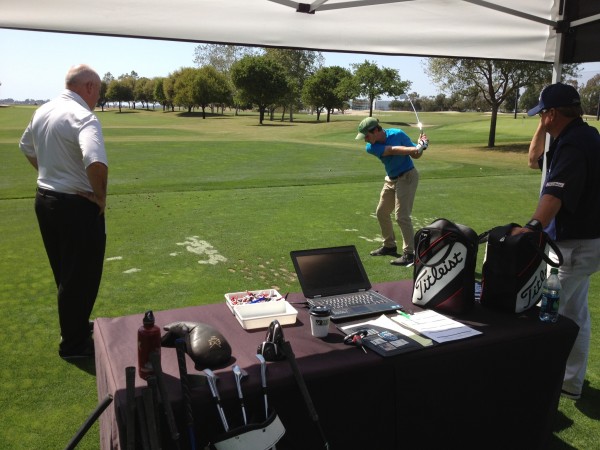


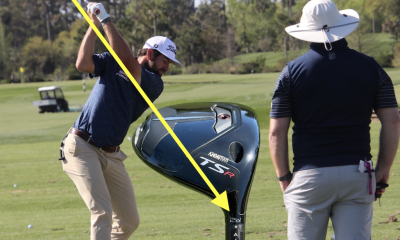



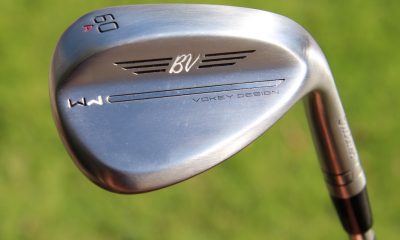

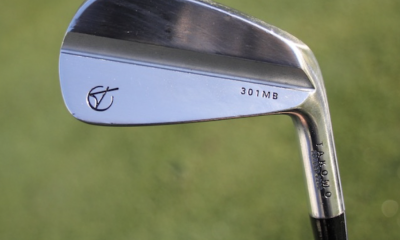

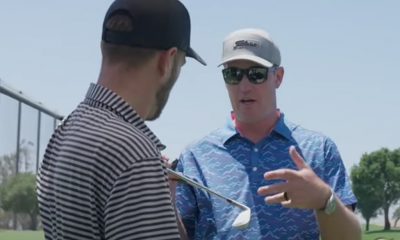

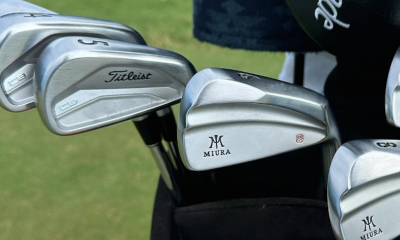










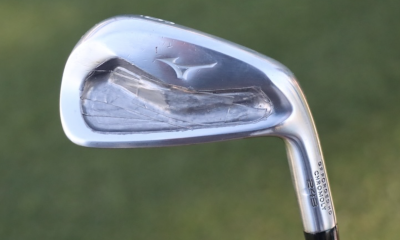

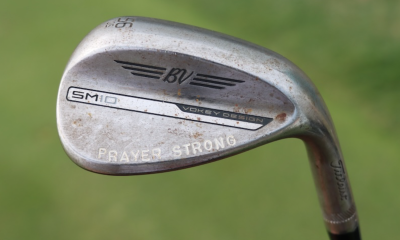

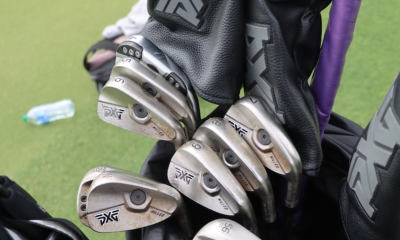

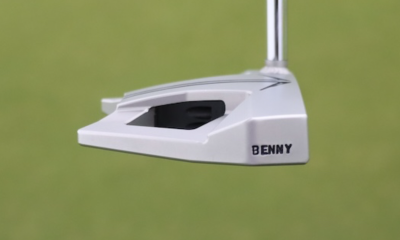

David
May 3, 2013 at 8:16 pm
Dan,
Nice that you got to go to the source! What is missing now is a Scotty Cameron Putter!!!! If your going to get the best gear you need to go all the way 🙂
Pingback: Who knows how to fit better than the source? – GolfWRX | Golf Grip Instruction
Mike
May 2, 2013 at 5:19 pm
Nice write up, Dan. I’m interested in your bag. Is it custom made? Also, all Titleist but no Scotty?
Dan Plan
May 3, 2013 at 7:39 pm
Hi Mike,
It’s a custom Vokey bag but I believe that you can order one online. I really like my SeeMore putter so didn’t see a reason to switch over.
Thanks!
Dan
Nick
May 2, 2013 at 3:10 pm
Titleist is the bomb. Got fit by them a year ago and saw immediete improvement. The change in my driver trajectory put ten yards on my drive immedietly with probably 15 percent more fairways. Massive game changer for me. While I did not see (or frankly desire) distance gains with my irons, the “cone” of my misses narrowed considerably. This was seen literally the second and third rounds I played with my new set (I think the pressure of playing with a new set and the overwhelming desire to see immediate improvmeent dooms the first round out with new equipment).
Rich
May 2, 2013 at 2:32 pm
Thanks for the review on the fitting. I live in socal and was wondering about getting fitted at Titleist compared to a Golf Smith or Roger Dunn. I was wondering about the cost as well.
Daniel
May 2, 2013 at 1:31 pm
I bet that was awesome getting all that info about your clubs and your swing, but most importantly being able to trust it since you were “at the source.”
Can a reader ask how much that fitting experience costs?
Zak Kozuchowski
May 2, 2013 at 5:22 pm
The cost of an individual fitting (metal woods, irons or wedges) at TPI Oceanside is $200. A full bag fitting is $500. All equipment is sold separately through authorized Titleist accounts.
You can learn more here — http://www.titleist.com/golf-club-fitting/
– Zak